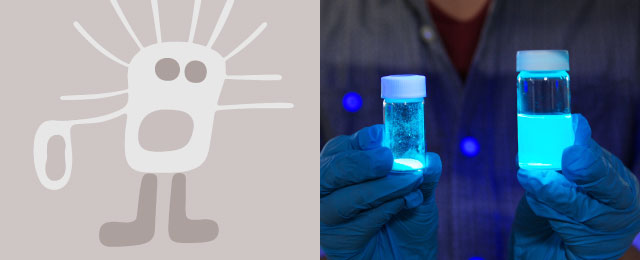







Home > Research > Research Overview > 2014 > Faculty of Agriculture
Tsuneo Sasanuma
Associate Professor
Department of Food, Life and Environmental Sciences
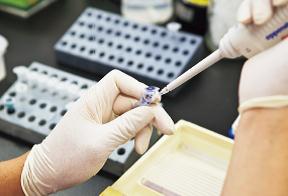
▲DNA analysis operation
Crops support our lives, but we barely know their history. I am studying the ancestors of crops, phylogenetic relationships between closely-related species, gene changes in domestication and more by comparing crops and wild plants at the DNA level. The main targets are wheat, saffl ower and pepper, and we have clarifi ed that the ancestor of cultivated saffl ower is a wild species in the Near East.
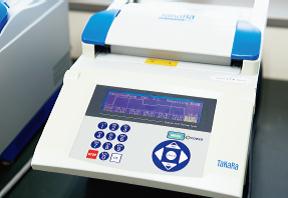
▲PCR machine for amplifying genes
Diverse varieties of crops and wild relatives are called genetic resources because humanity can use them as materials for crop improvement. I have performed research and collection in the Near East and Central Asia, on the coast of the Caspian Sea and in other locations, discovering ancient wheat varieties and ancestral wild species. We have also researched and collected wild wheat relatives with humidity tolerance in Japan.
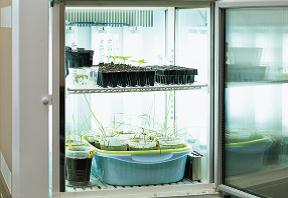
▲Evaluating stress tolerance of genetic resources in an artificial climate chamber
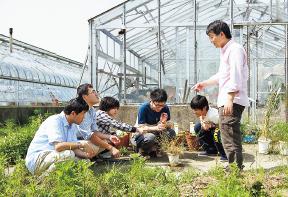
▲Instructing students in genetic resource classification
We are studying the phylogenetic relationships and diversity of genetic resources and critical genes related to product taste, fruit color and fl ower color at the DNA level. We are also studying basic agricultural characters such as fl owering dates and seed size according to data obtained by growing them in a farm and a greenhouse. We have crossed different varieties and between cultivated and wild species to perform genetic analysis and breed new resources. Using this research, we are working to discover useful unknown genes from indigenous varieties and wild species and to apply the genes to breeding.